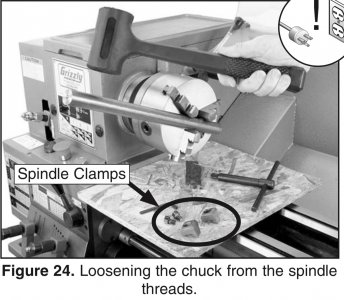'Way back in the dark ages when I was just starting with industrial electrical work, I ran a lot of rigid conduit. I mean a LOT, as I was one of the younger guys in the shop and could contort to fit the old(ca1896) mill building. Mostly 3/4 inch rigid which equates to 3/4 inch schedule 40 galvanized water pipe. I got so strong in my hands I could assemble a conduit run by hand that needed a pipe wrench to undo. That was a long time ago, but the memories are still there.
Which brings me to the problem at hand. There were instances of 3/4 rigid laid directly on a concrete floor where it could be run over by forklifts and the like. A trick I soon learned was to attempt to tighten the joint before loosening it.. Not much, just enough to get it to "creak" or squeel once. On old galvanized pipe, fasteners, most any super tight connection, it did help. Even the longest pipe wrenches would find things easier. It was an old school millwright that showed me the trick.
I don't say it will solve your problem, but it would be worth a shot. If it didn't work, you only wasted a couple of minutes.
.

